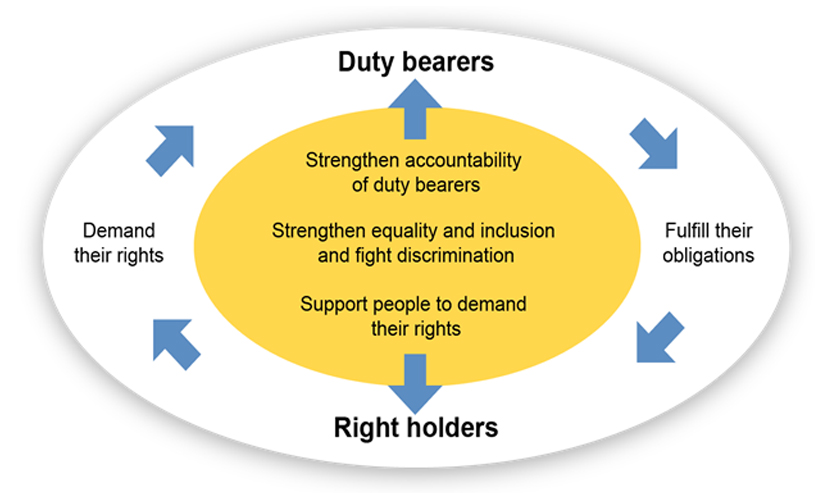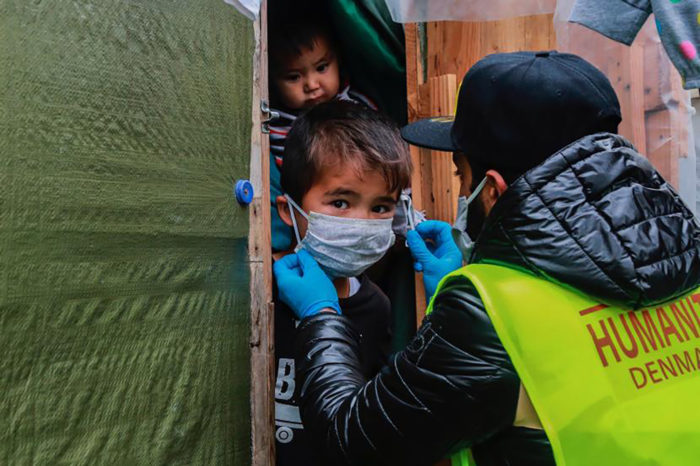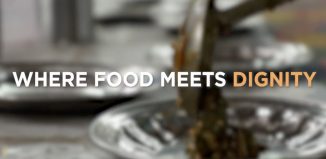Helping the aid community ensure results-based Protection work in COVID-19 Response
Photo Credits: Manolis Lagoutaris/AFP via Getty Images
In recent years, there has been a substantial increase in international interest in ‘protection’ and a range of new guidelines, standards and tools for protection practitioners. With serious protection risks arising due to the COVID-19 crisis in nearly every humanitarian setting, it is now more critical than ever for organisations to consider the protection obligations they have, and how they can proactively prevent, mitigate and respond to acts of violence, coercion and deliberate deprivation of rights.
Community World Service Asia and Act for Peace co-hosted this webinar focusing on the core methods and foundations of protection programming. Protection programming aims at reducing the risk of serious harm to vulnerable groups as a result of violence, coercion and the deliberate deprivation of rights and access to information, services and resources.
A hundred and fourteen humanitarian practitioners from thirty-one countries participated in this interactive webinar. James Thomson, Senior Protection and Policy Advisor at Act for Peace led and facilitated the 75-minute session on May 20th.

Layers of Protective and Counter-Protective Influence
With such a wide variety of actors now involved in protection, it is important to understand protection as a ‘shared responsibility’. All actors have some form of protection responsibility, including humanitarian actors.[1] People can best access their rights in safety and dignity when all actors fulfil their responsibilities to build and maintain a protective environment. With limited protection and assistance, vulnerable individuals or groups are less able to resist, recover from and prevent or avoid future protection problems.
Protection practice starts with identifying and assessing protection risks; that means analysing the interplay of the three factors that create risks: the ‘threat’ itself, the ‘vulnerabilities’ of the group targeted, and their ‘capacity’ to address protection problems. The aim of protection is to reduce threats and vulnerabilities, and increase capacity.
James highlighted. When you understand what protection responsibilities they have, the source of their responsibilities, and their willingness and capacity to provide protection, you are much better equipped to engage in effective advocacy and programming. For example, understanding what responsibilities a local official has for distributing goods and services, and the source of that responsibility – under law, department policy, or as part of their job description – means you are better equipped to hold them to account if they withhold goods, exclude groups, or demand kick-backs.When you are trying to get people to acknowledge their protection responsibilities and act in accordance the most important thing to understand is what responsibilities they have and the source of their protection responsibilities, which may stem from moral and ethical standards, cultural norms, laws and principles, humanitarian standards, organizational mandates or policies,
The international legal framework for protection, which consists of three mutually reinforcing bodies of international law (human rights, humanitarian and refugee law) provides a strong accountability framework. Practitioners should endeavor to work within, and strengthen, this legal framework by using a rights-based approach to protection where possible.
Adopting a Rights-Based Approach
A human rights-based approach starts with recognising people as rights-holders and states as duty-bearers who have protection responsibilities. It aims to strengthen people’s capacity to claim their rights and the capacities of ‘duty-bearers’ to ensure that they recognise and act on their responsibility to respect, protect and fulfill human rights of communities affected by conflict, disasters and displacement. It further asserts people’s right to request and receive protection and assistance from their governments. “It is not an optional or charitable act, it is a duty!” These actions promote equality and inclusion and ultimately create accountability between people and governments.

Participants raised concerns about protection amid COVID-19 globally. James noted that
COVID-19 has resulted in a severe global economic crisis. People are losing their jobs and livelihoods, experiencing family breakdown, and the crisis is inflaming conflict, racism and xenophobia. As it deepens, different social groups will face considerable risks as a result of increased vulnerability, new threats and reduced capacity to address these challenges, so it’s critical NGOs assess these changing risks and respond through programs and advocacy.
Hannah Valentine, a participant asked how to identify threats and vulnerabilities that communities face, specifically in times like the COVID 19 crisis. James noted that
the best way to find out is to speak with individuals and groups who are facing the risks. They not only have the right, the capacity and the desire to participate in activities designed to strengthen their protection, but they also have a sound understanding of the risks they face, what options they have to respond and what help they need.

Reflections:
- With domestic violence and child abuse rising rapidly as a result of the COVID-19 lockdowns, it is essential to provide protection timely and appropriately manner.
- Identifying people at risk is essential as there are many hidden people or groups of people that need protection, such as people living with disabilities. In this case, the Washington Group Short Set of Questions will help identify those groups or individuals in order to give access to protection service and participation
- Pro-active coordination and a consideration of contextual sensitivities is required by actors engaged in protection work in countries where human rights are under protected
- The three main components of risks; Threats, Vulnerability and Capacity, must be addressed while responding to protection needs
- Program designs must respond to an assessment of protection risks along with the identification and breakdown of protection problems in different contexts
Resources:
Protection Standards, guides and tools:
- The Global Protection Cluster has a collection of protection standards, guidance and tools
- Sphere Protection Standards – the minimum protection standard for all humanitarian actors
- ALNAP Protection Guide
- UNICEF Child Protection Training Online
Humanitarian response resources:
- Guidance: COVID-19 Sensitive Interventions Scaling-up COVID-19 Outbreak Readiness and Response Operations in Humanitarian Situations Including Camps and Camp-Like Situations IASC March 2020
- Responding to COVID-19: Guidance for humanitarian agencies by ALNAP is a Rapid Learning Review outlining 14 actions, insights and ideas for humanitarian actors to consider in their COVID-19 responses.
- Covid-19 Humanitarian is an open-access web-based platform promotes the exchange of field-based COVID-19 program adaptations and innovations, facilitating learning among organizations in different sectors and contexts.
- Covid-19 Response Portal holds a vast collection of guidelines, tools, papers and lessons learnt from across and beyond the ALNAP Membership which are relevant to responding to the current Covid-19 pandemic.
- Gendered Implications of Covid-19 Outbreaks in Development and Humanitarian Settingsis a policy brief by CARE International calling on development and humanitarian organisations, national governments, and international donors to consider the gendered implications of the pandemic.
Human rights and civic space resources:
- Covid-19 Civic Freedom Tracker monitors government responses to the pandemic that affect civic freedoms and human rights, focusing on emergency laws that restrict human rights
- UN OHCHR provide guidance on Covid-19 and Human Rights.
- ICNL’s page on Coronavirus and Civic Space presents key resources and information on how international law provides a framework to uphold human rights during crisis response.
- Covid-19 and the disability movement to support a disability-inclusive response to the crisis and share the most recent updates and resources as they become available.
- Amnesty International’s preliminary observations on Covid-19 and human rights and other resources.
- Guidance for supporting and protecting older people in low and middle income countries is provided by Age International.
- Human Rights Due Diligence and COVID-19: Rapid Self-Assessment for Business by UNDP.
- Ensuring the public’s right to know in the COVID-19 pandemic report is intended to assist governments, civil society and media in identifying key information and data that should be released.
Safeguarding resources:
- Resource and Support hub guidance on Safeguarding Against Sexual Exploitation and Abuse and Sexual Harassment (SEAH) for aid organisations delivering programmes to assist countries affected by COVID-19. Also see: IASC Interim Technical Note: Protection from Sexual Exploitation and Abuse (PSEA) during Covid-19 Response and the Global Mentoring Initiative checklist on safeguarding for local and national CSOs during Covid-19 response aimed especially at local and national CSOs.
- Short guidance on the CHS commitment to PSEA during Covid-19 produced by CHS Alliance.
Country-specific info and situation reports:
- UK government information for the public, with daily updates on cases.
- WHO daily update of cases worldwide.
- Useful dashboard visualisation of cases for monitoring cases in programme countries.
- John Hopkins University CCSE resource hub on latest research into coronavirus.
Other useful resources, podcasts and webinars:
- Migrants’ contribution to the COVID-19 response by ODI shows examples of reforms, new initiatives and campaigns from across the world.
- Coronavirus Evidence Collection, Evidence Aid’s bank of summaries of relevant research, which are available in English and other languages.
- Covid-19 – Government measures, ACAP’s dataset of the measures adopted by governments to reduce transmission of Covid-19.
- The Coronavirus Tech Handbook is a crowd-sourced library for technologists, civic organisations, public and private institutions, researchers.
- Three ideas to communicate sensitively in the Covid-19 crisis by Maryam Mohsin.
- Support resources during the Covid-19 outbreak collated by CONCORD.
- Resources and access to translators without borders for developing communication strategies in response to Covid-19.
- The Covid-19 Learning Pathway (Open Access) course enables humanitarians, including local responders, to be best equipped to respond to the global pandemic Covid-19 (Coronavirus) by Kaya and Save the Children.
[1] Minimum protection standards include Sphere protection principles, the minimum standards for protection mainstreaming, safeguarding against sexual abuse, exploitation and abuse, and child protection.







